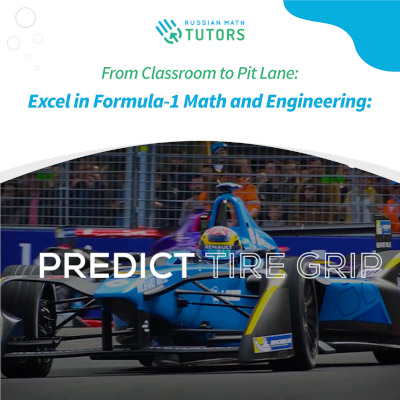The Astonishing World of Math Behind Formula 1 Racing
In this mathematical ballet, every detail counts, and the difference between victory and defeat often boils down to fractions of a second. Let's take a thrilling pit stop into the astonishing world of math behind Formula 1.
Aerodynamics and Wind Tunnel Testing Formula 1 cars are sleek. The design process relies heavily on math and wind tunnel tests. Engineers use complex equations to shape the car. They cut air resistance and boost downforce for better grip on the track.
Tire Management Strategy Tires are a critical Factor in Formula 1, and teams employ intricate mathematical models to understand tire wear and degradation. These models help determine the ideal moment for pit stops, making sure the car is on the track with the best rubber for maximum grip.
Fuel and Energy Management Mathematics plays a vital role in calculating the ideal fuel load for the race. The weight of the car, combined with the track layout and expected tire wear, determines how much fuel is needed. Teams need to balance the fuel load to minimize weight and maximize speed.
Data Analysis and Telemetry In a Formula 1 race, hundreds of data points are collected every second. The real-time analysis of this data is crucial. Math-driven algorithms process information on tire pressure, engine temperature, and aerodynamics. They use it to make split-second decisions that affect the race.
Race Strategy and Pit Stops Race strategy is an intricate mathematical puzzle. Teams consider variables, including tire type, weather, and rivals' strategies, and use them to optimize pit stop timing. Decisions are based on mathematical models to ensure the best possible race outcome.
Dynamic Racing Line Optimization Mathematics is used to calculate the optimal racing line. This involves analyzing the track layout. You must consider variables like speed, grip, and cornering forces to find the fastest path around the circuit.
Simulations and Virtual Reality Formula 1 teams use math simulations and VR tools. They use them to test races and strategies. This technology helps them anticipate and prepare for every possible outcome.
Data-Driven Driver Feedback Math analyzes a driver's performance. The data comes from sensors and cameras. It shows where the driver can improve, ranging from braking points to acceleration out of corners.
Championship Point Calculations For drivers and teams, winning the championship is not just about race wins. It's about getting points. The points system is carefully designed to reward consistent performance. Math determines the championship standings.
In the high-speed world of Formula 1, mathematics isn't confined to textbooks; it's on the racetrack, in the engineering workshops, and inside the cars themselves. Every aspect of Formula 1 racing is infused with math, from aerodynamics and tire management to strategy and data analysis. So, the next time you watch a Formula 1 race, remember that behind the glamour and speed, there's a dazzling display of mathematics shaping the outcome.

Join our exclusive online lessons today!
| Private Lessons | | | Group Lessons |



